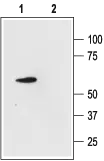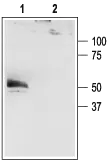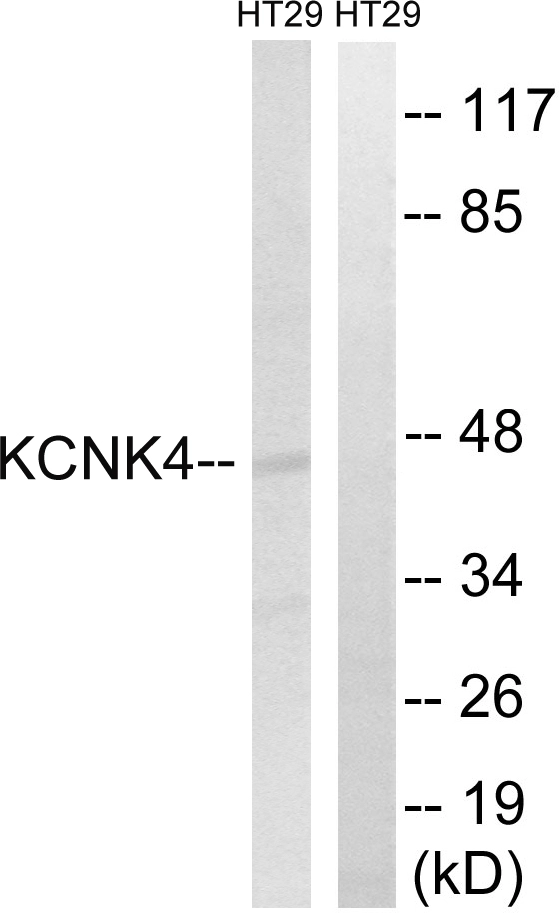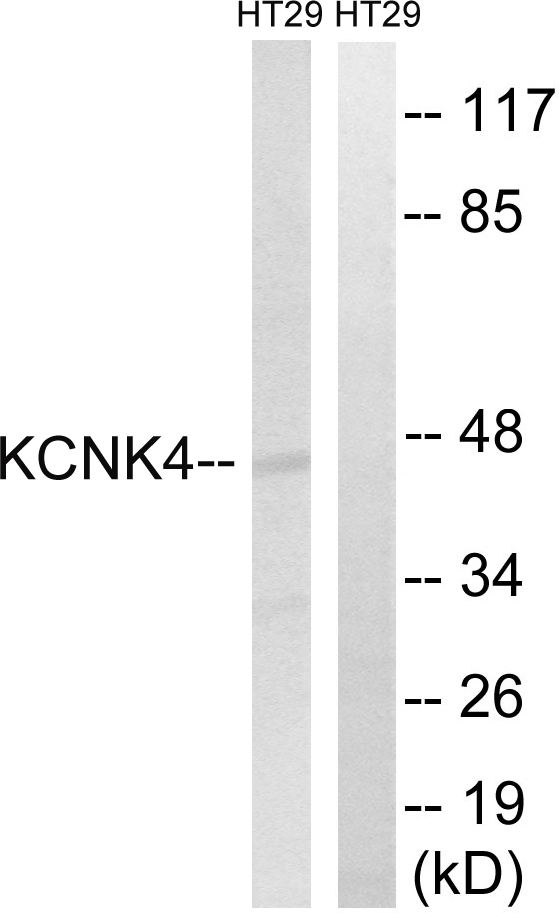
IHC-Fr analysis of rat cerebellum tissue using GTX16684 KCNK4 antibody. Panel A : KCNK4 channel appears in Purkinje neuronal processes (red). Panel B : Staining of Purkinje nerve cells with mouse anti-calbindin D28K (a calcium binding protein, green). Panel C : Merge of KCNK4 channel and calbindin D28K demonstrates the co-localization of these proteins.
KCNK4 antibody
GTX16684
ApplicationsWestern Blot, ImmunoHistoChemistry, ImmunoHistoChemistry Frozen
Product group Antibodies
TargetKCNK4
Overview
- SupplierGeneTex
- Product NameKCNK4 antibody
- Delivery Days Customer7
- ApplicationsWestern Blot, ImmunoHistoChemistry, ImmunoHistoChemistry Frozen
- CertificationResearch Use Only
- ClonalityPolyclonal
- Concentration0.8 mg/ml
- ConjugateUnconjugated
- Gene ID50801
- Target nameKCNK4
- Target descriptionpotassium two pore domain channel subfamily K member 4
- Target synonymsFHEIG, K2p4.1, TRAAK, TRAAK1, potassium channel subfamily K member 4, K2P4.1 potassium channel, TWIK-related arachidonic acid-stimulated potassium channel protein, potassium channel, subfamily K, member 4, potassium channel, two pore domain subfamily K, member 4, two pore K(+) channel KT4.1, two pore K+ channel KT4.1, two pore potassium channel KT4.1
- HostRabbit
- IsotypeIgG
- Protein IDQ9NYG8
- Protein NamePotassium channel subfamily K member 4
- Scientific DescriptionThis gene encodes a member of the TWIK-related arachidonic acid-stimulated two pore potassium channel subfamily. The encoded protein homodimerizes and functions as an outwardly rectifying channel. This channel is regulated by polyunsaturated fatty acids, temperature and mechanical deformation of the lipid membrane. This protein is expressed primarily in neural tissues and may be involved in regulating the noxious input threshold in dorsal root ganglia neurons. Alternate splicing results in multiple transcript variants. Naturally occurring read-through transcripts also exist between this gene and the downstream testis expressed 40 (TEX40) gene, as represented in GeneID: 106780802. [provided by RefSeq, Nov 2015]
- Storage Instruction-20°C or -80°C,2°C to 8°C
- UNSPSC12352203







